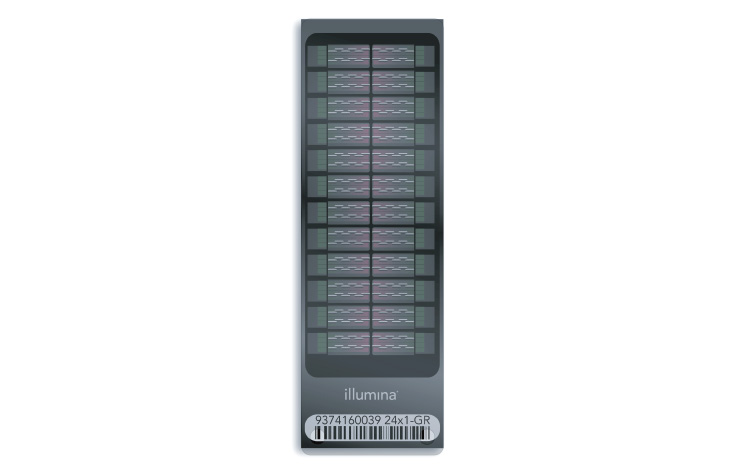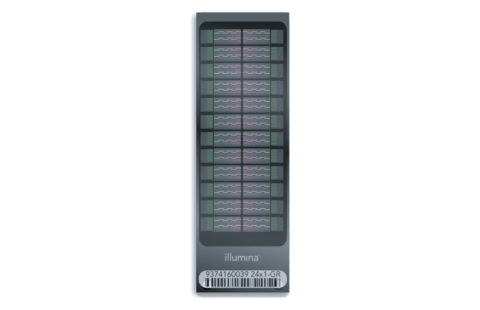
How does home DNA testing work?
Before explaining all about the 23andMe v5 genotyping chip, it’s important that you understand how at-home DNA testing works.
What is a genotype?
The first thing you need to know when talking about DNA testing is what a genotype is. Humans are estimated to have 20,000 to 25,000 genes, that is 20,000 to 25,000 individual instruction manuals which tell our cells how to function.
Each of these genes may have 2 or more of what we call alleles. An allele is just a variant, so if we are talking about the gene for eye color for example, you could have a blue eye allele or a brown eye allele. These variants are also sometimes referred to as SNPs. To date, more than 335 million SNPs have been discovered in humans worldwide, so there’s a whole lot of room to be unique.
Your genotype is your own personal collection of genes, in other words what makes you unique. The process of identifying your genotype is called genotyping and this is the process used by companies like 23andMe when they test your DNA.
Collecting a DNA sample
The first part of any DNA test involves collecting a sample. Most DNA testing companies like 23andMe request a saliva sample. In the case of 23andMe, they provide you with all of the equipment along with clear instructions requesting you to fill a collection vial with saliva before mailing it to their nominated lab for analysis.
How does genotyping work?
Once you’ve mailed your DNA sample to the lab, they will then begin by extracting your DNA from the sample. This is done using a range of different chemical and physical processes which clean away the majority of the non-useful components of your sample leaving pure DNA. The extracted DNA is then replicated up to several million times using a process called PCR.
Once your DNA has been replicated, it is cut up into smaller fragments before being loaded onto a small glass DNA chip called a microarray. This small glass chip has millions of invisible to the naked eye extensions all over it which stick to your chopped up DNA.
The chip is then inserted into a machine which uses a high resolution camera and fluorescence to identify the short sequences of DNA attached to each extension. The process typically takes a few hours and results in a large text file containing your genotype.
This raw data file is then processed by companies like 23andMe into an easy to read and aesthetically pleasing final product which provides you with insights into your ancestry or health traits.
What is the 23andMe v5 chip?
The 23andMe v5 chip is the latest genotyping chip offered by the company. Some companies will change chips regularly in order to try and improve their products. So far, 23andMe has used the following chip versions:
- v1 (2007)
- v2 (2008)
- v3 (2010)
- v4 (2013)
- v5 (2017)
23andMe’s primary offering for example is ancestry reporting, however, they also offer health testing. The newer Illumina GSA V5 chip allows 23andMe to provide more accurate ancestry reporting as it is better for identifying different ethnicities from around the world compared to their previous chips which were more focused on Caucasian populations.
How many SNPs does 23andMe test?
So what is the difference between any old genotyping chip and the 23andMe v5 chip? The answer is ‘coverage’ or ‘the number of SNPs tested’.
Regardless of what DNA chip is used, only a small fraction of your genotype is actually identified. The human genome is made of more than 3 billion nucleotides. Within it, there are around 10 million known SNPs and most at home DNA tests cover less than 1 million SNPs.
The reason so many SNPs aren’t used is because many don’t provide useful information. Some SNPs also can’t be used due to FDA regulations on certain health topics. Ultimately what chip a company uses is dependent on their core product offering.
For comparison, companies more focused on health such as SelfDecode do not require the ancestry centric v5 chip. Instead, SelfDecode opts to test for over 700,000 SNPs which in turn helps to ensure that users don’t miss out on any core health SNPs which may not be included on chips such as the 23andeMe v5. So, ultimately, which company you choose for your DNA testing should be based on what you’re interested in rather than the chip they opt for.
If you are particularly interested in health, SelfDecode offers over 40 detailed wellness reports which use predictive algorithms to analyze around 85 million genetic variants (~1 million per wellness report), giving you the most accurate health data based on your genetics.
Not only this but their wellness reports include personalized recommendations to counteract specific problematic genetic variants, rather than generic recommendations, giving you the best in precision medicine.
Takeaway: Is 23andMe v5 chip the best choice for you?
If you’re particularly interested in ancestry and some health reporting, then the new 23andMe v5 chip can provide you with a more accurate ancestry composition than the previous chips used by the company.
However, if you are more interested in health reporting you may be better placed choosing a different service such as SelfDecode who investigates more genetic variants to give users the most valuable health information.
Related
- How do DNA tests work? What you need to know
- How Accurate is 23andMe?
- What To Do With 23andMe Raw Data


